
Skoda Yeti Hatchback (2009-2017) review
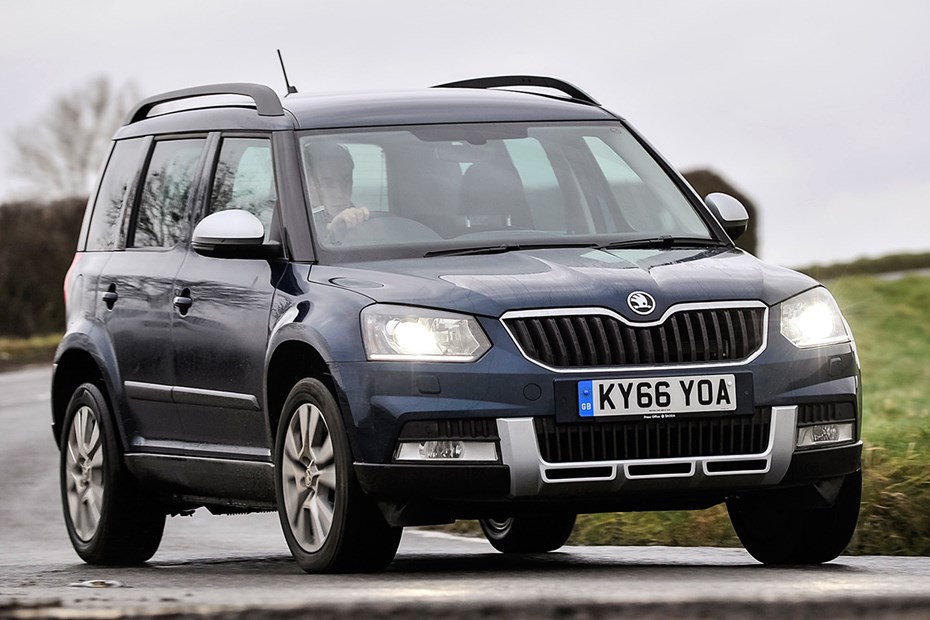
At a glance
| Price new | £15,110 - £27,990 |
|---|---|
| Used prices | £1,625 - £12,912 |
| Road tax cost | £35 - £395 |
| Insurance group | 9 - 24 |
Get an insurance quote with

|
|
| Fuel economy | Not tested to latest standards |
| Range | 462 - 774 miles |
| Number of doors | 5 |
| View full specs for a specific version | |
Available fuel types
Petrol
Diesel
Pros & cons
- Spacious and practical but compact
- Available with four-wheel drive
- Lots of choice on the used market
- Getting on a bit now, so may become more problematic
- Some common engine and electronics issues
- Rust and off-roading damage
Skoda Yeti (09-17) rivals
Overview
The Skoda Yeti may have gone out of production in 2017, but such is its distinctive style and practical nature that this compact SUV still has a strong cult following and is one of the best used buys under £5,000. The boxy body combines a small footprint just 4.2m long with a remarkably practical cabin and a usefully square boot.
Owners tend to love them, but detractors are so equally sure of themselves Skoda chose to name its successor something else in order to avoid putting anyone off. As a used car purchase it has plenty going for it – there’s lots of choice and it’s great value – but there are some issues you need to look out for.
Skoda Yeti known faults and common problems
Because the Yeti has such an enthusiastic following there are loads of resources available to prospective used buyers. Owners’ forums and Facebook groups are packed with info about what can go wrong, but don’t be too disheartened – it’s far more likely that someone will go online to complain about something rather than to praise it, and at least you can view any potential purchase armed with info. We’ve distilled what we believed to be the most common faults into a list below, but even then you shouldn’t have too much to worry about: in the Parkers owners reviews section, the Yeti has an outstanding 4.5 out 5 rating.
Buying guide
Common issues, and what to look for if you’re looking at getting one
1. Oil consumption
The Yeti shares its engines with a large number of other Volkswagen Group products, and as such being partial to a drop of oil isn’t unusual. The tricky bit is knowing whether the previous owners have kept on top of the habit. Letting oil levels run too low will increase wear and reduce engine life. Evidence of thorough service history rather than low mileage is the best way to gauge how well the car you are viewing has been looked after and whether it’s likely to be dependable in the future.
2. Problematic electronics
Minor electrical issues can be a real pain in the backside to diagnose and repair, and the Yeti is now of an age where these may be increasingly common. The wiring looms in the doors are often the culprits, but it’s worth taking the time to make sure everything works as it should. Check for flickering lights, misbehaving central locking and warning symbols on the dashboard. Repeated visits to the dealer over a short period may hint at these kinds of issues, so look at the paperwork carefully.
3. Exhaust gas recirculation (EGR) valve failure on diesel models
Not an unusual issue in modern cars, particularly when run on low quality fuel or if regularly driven for short journeys, where the engine is unable to warm-up fully – diesel particulate filters (dpf) and throttle control systems often suffer for the same reasons. The EGR issue in the Yeti is unfortunately compounded by the location of the part, which is difficult to get to resulting in large labour bills in addition to the cost of the components. Symptoms include poor running and rough performance as well as reduced fuel economy, so make sure you test drive a few examples so you know how a good example behaves.
4. Turbocharger and timing chain failure
Turbo failures are rare but not unheard of, especially on the 1.2-litre TSI petrol engine. More than likely an issue that would have already occurred if it was going to, but it’s a big bill should the worst happen. Being a relatively small engine in a relatively large car, the causes include being consistently driven too hard before everything has fully warmed up, poor servicing and similar mistreatment – so here you may need to judge the owner as much as the vehicle before making a used buying decision. Earlier 1.2-litre engines also suffer with timing chain problems, with later models switching to an easier-to-maintain belt.
5. Does the four-wheel drive system work?
Unlike many modern SUVs, the Yeti was available with four-wheel drive and offers reasonable off-road capability. But the Haldex all-wheel drive system can be temperamental if neglected, and many Yeti 4x4 models are now often only two-wheel drive. Look for a loose surface during the test drive to see if the system sends power to the back wheels once the fronts start spinning, and check the service history for evidence that the correct maintenance has been consistently completed – the Haldex transmission oil should be changed at least every 40,000 miles.
6. Water in the cabin
Take the time to check the carpets aren’t wet anywhere, especially if the Yeti you’re looking at has the panoramic roof option. If the drainage channels become blocked, the water ends up going where it isn’t wanted…
7. Poor paintwork and rust
Owners’ forums are full of buyers complaining about the quality of the Yeti’s paint when new – now it’s several years out of production, any weaknesses here are only likely to have gotten worse, especially as the corrosion-inhibiting galvanised coatings run out of life. The doors in particular are worth examining closely, as they can be prone to rust on the lower edges, but issues with subframes and other areas aren’t unheard of. Look at the MOT history for advisory notices and – heaven forbid – failures. Off-road use and damage will make this worse, so find out what you can about how and where the Yeti has been previously driven.
8. Worn-out suspension, door hinges and interiors
As mileages climb higher, so too does wear and tear. Listen carefully for knocking noises during the test drive that might indicate worn-out suspension bushes and do your best to examine the shock absorbers for signs of weeping fluid. Again, the MOT history may be helpful here. As the door hinges age, the door can drop slightly when opened, making it difficult to shut again – a small thing, but might just drive you barmy. Similarly, make sure the folding seat backs lock in place properly.
9. Emissions ‘fixes’
The Yeti is very much of the era of the so-called dieselgate scandal, and as such many TDI models will now have had their original engine management software ‘corrected’ to be properly legal. Unfortunately, some owners have found this process has degraded performance and made the fuel economy worse. Again, it’s worth taking the time to view several examples to make sure that you know how a good one should behave when driving.
10. Gearbox problems
Dual-mass flywheel issues and worn clutches can be a problem for manual gearbox cars, while the automatic models use VW’s DSG transmissions, which can suffer from premature clutch wear and should be maintained religiously. Check for strange vibrations during the test drive and make sure gears engage smoothly.
What models and trims can you buy?
Skoda used a variety of model names over the Yeti’s lifetime, offering something for most people. This ranges from basic versions through to luxuriously leather-appointed range-toppers, and towards the end of the line there was even a greater distinction between on-road orientated versions (body-coloured bumpers and trimmings) and those intended for more rugged use (Outdoor spec retaining lots of black plastic cladding).
Similarly, the engine range was broad and inclusive, with 1.2, 1.4 and 1.8 litre petrol models offered and a choice of 1.6 or 2.0 litre TDI turbodiesels. Power output ranged from 105hp to 170hp, while Greenline models came prepared for maximum fuel economy.
Over the next few pages, we’ll review each aspect of the Skoda Yeti, taking into account its practicality, comfort, fuel economy and performance. If you’re short on time, you can also skip to our verdict page to see if we recommend the Yeti as a good used car.



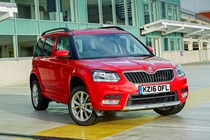


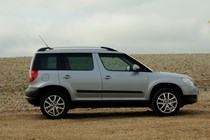
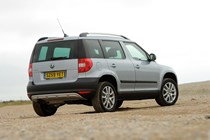

.jpg)
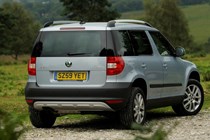
.jpg)
.jpg)
.jpg)
.jpg)
.jpg)
.jpg)
.jpg)
.jpg)
.jpg)
.jpg)
.jpg)
.jpg)
.jpg)
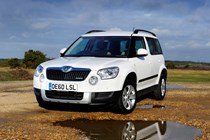
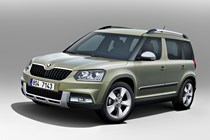
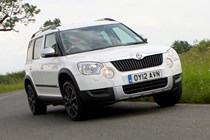


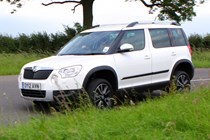


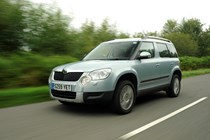
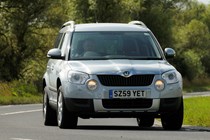
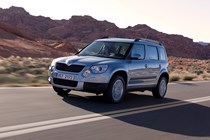
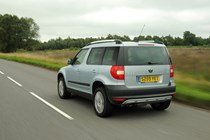
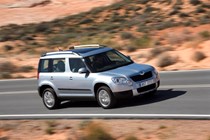

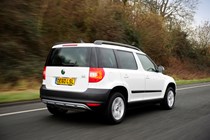

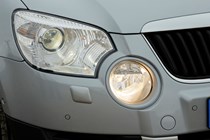


.jpg)
.jpg)
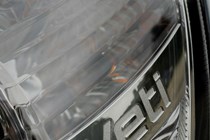
.jpg)
.jpg)
.jpg)
.jpg)
.jpg)
.jpg)
.jpg)
.jpg)
.jpg)
.jpg)
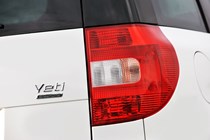
.jpg)
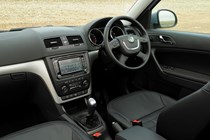
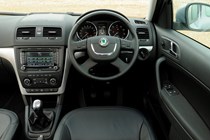
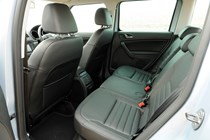

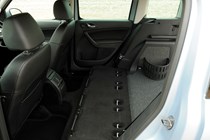
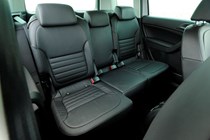
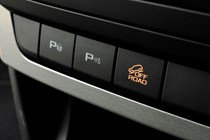
.jpg)
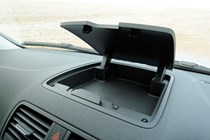
.jpg)
.jpg)
.jpg)
.jpg)
.jpg)
.jpg)
.jpg)
.jpg)
.jpg)
.jpg)
.jpg)
.jpg)
.jpg)
.jpg)
.jpg)
.jpg)
.jpg)
.jpg)
.jpg)


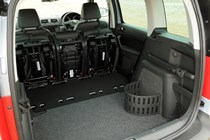
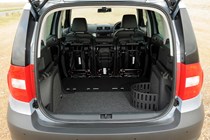
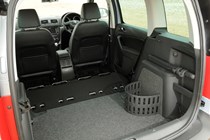
.jpg)
.jpg)
.jpg)
.jpg)
.jpg)
.jpg)
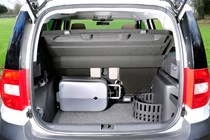
.jpg)
.jpg)
.jpg)
.jpg)
.jpg)
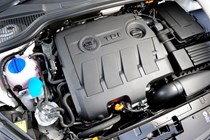


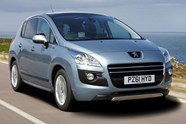







.jpg?quality=50)

.jpg?quality=50)
.jpg?quality=50)
.jpg?quality=50)
.jpg?quality=50)
.jpg?quality=50)
.jpg?quality=50)
.jpg?quality=50)
.jpg?quality=50)
.jpg?quality=50)
.jpg?quality=50)
.jpg?quality=50)
.jpg?quality=50)
.jpg?quality=50)



















.jpg?quality=50)
.jpg?quality=50)

.jpg?quality=50)
.jpg?quality=50)
.jpg?quality=50)
.jpg?quality=50)
.jpg?quality=50)
.jpg?quality=50)
.jpg?quality=50)
.jpg?quality=50)
.jpg?quality=50)
.jpg?quality=50)

.jpg?quality=50)







.jpg?quality=50)

.jpg?quality=50)
.jpg?quality=50)
.jpg?quality=50)
.jpg?quality=50)
.jpg?quality=50)
.jpg?quality=50)
.jpg?quality=50)
.jpg?quality=50)
.jpg?quality=50)
.jpg?quality=50)
.jpg?quality=50)
.jpg?quality=50)
.jpg?quality=50)
.jpg?quality=50)
.jpg?quality=50)
.jpg?quality=50)
.jpg?quality=50)
.jpg?quality=50)
.jpg?quality=50)





.jpg?quality=50)
.jpg?quality=50)
.jpg?quality=50)
.jpg?quality=50)
.jpg?quality=50)
.jpg?quality=50)

.jpg?quality=50)
.jpg?quality=50)
.jpg?quality=50)
.jpg?quality=50)
.jpg?quality=50)
